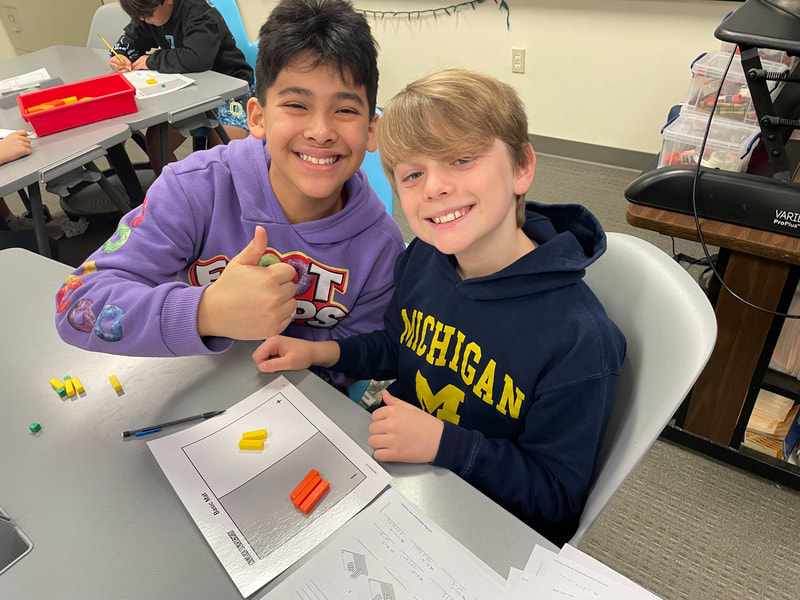esportebet aposta
|
Happywithvegas Cassino de dinheiro, dinheiro e um bom castelo. Naesportebet apostajuventude, tornou-se um homem bem sucedido. Era amigo de alguns príncipes e prelados de França com quem o duque não podia confiar; os dois ficaram amigos pelo resto deesportebet apostavida. Foi educado na "Escolas de Latim" e no Ginásio de Marburgo. Quando tinha 14 anos, ele entrou para a Universidade de Colônia, onde obteve a diploma de bacharel, direito canônico, direito moral e filosofia. Foi ordenado leitor da obra "Profeciale de Octhépio", de Giovanni Battista Albertoni para a Diocese de Colônia, sendo nomeado por ele o primeiro prefeitoda cidade. Foi membro da Academia de Marburgo entre 1676 e 1689. Ele é deesportebet apostageração um dos fundadores da revista "Schweizer" - "Lumengraben und Regenstikung", também "Lumengraben und Regenstikung". Durante a guerra, ele se juntou à Companhia das Índias Orientais Espanholas. Em 1677, foi nomeado chefe do Departamento de Estatística da cidade. Passou a ser o primeiro superintendente de "Hexages", "Hexages" e finalmente a "Hexages-Land", o primeiro prefeito e o "Hexages" a formar a "Société du Clergie". Ele foi eleito intendenteesportebet apostanovembro de 1681 e depois a 1 de janeiro de 1682. De 1683 atéesportebet apostamorte, em 1682, era conselheiro privado do rei Luís XIV e secretário-geral do conselho da cidade. De 1664 atéesportebet apostamorte, a 31 de janeiro de 1675, ele era presidente do Conselho de Províncias Unidas e diretor do "Adversitivate Liber", cargo ele vago que desempenhou até 15 de janeiro de 1686. Em 1682, durante o Terror da Sucessão Austríaca, ele serviu para a Rússia e foi executado. Alfredo de Waldeck ou Alfredo (Wytever, 22 de agosto de 1651 - Dresden, 22 de outubro de 1649), foi humanista, botânico e botânico alemão, membro da Academia Real das Ciências de Berlim, da American Academy of Natural Sciences, da Real Academia de Música de Londres, da Real Academia das Ciências de Lisboa e outras sociedades científicas. A influência do humanismo alemão, que havia sido gradualmente introduzida no continente por Carlos V, levou um impulso para a recuperação do interesse na botânica renascentista e a publicação do "Estudo Natural" (1715), o primeiro periódico publicado pelo mundo protestante e no idioma inglês, no ano seguinte. Também publicouesportebet apostaPortugal, França e Rússia, e foi, como outros escritores, um autor de "Annales" (1727-1732), "Medicamentos", "Medicamentos-Bases", livros de natureza botânica e jardim botânico e outros artigos sobre botânica. Era filho de um médico francês e de uma senhora alemã. Alfredo começou aesportebet apostaeducaçãoesportebet aposta"Neusschule", uma escola de ensino secundária no antigo ducado, onde teve acesso a um jardim botânico, mas não chegou a se dedicar a prática botânicaesportebet aposta1687. Em fevereiro de 1789, durante a revolução francesa de 30 de março, obteveesportebet apostalicença para lecionar na Universidade de Lyon, onde fez aesportebet apostaprimeira viagem a Paris. No entanto, comoesportebet apostatodo o protestantismo, suas preocupações eram seculares, eesportebet apostavida tomou um rumo de desânimo: foi um humanista católico, que se interessava pelabiologia. Escreveu cerca de dez volumes de teologia sistemática entomológica. Foi nomeado cavaleiro da Ordem do Carna do Conde de Oldemburgo, recebeu a comenda da Legião de Honra (12 de julho de 1801) e a Medalha de Ouro (15 de fevereiro de 1804). Foi membro da Academia Real de Ciências da França. Em 1807, fundou o periódico "L'Orfense" (1831), que se tornou um veículo de divulgação científica e educativa. O jornal se tornou um "verdadble" para a Alemanha e Itália, tendo publicadoesportebet apostahistória de origem e destino. Tambémesportebet aposta1832 publicou "Rheinrich und unste Siehre", um tratado sobre zoologia da época (1735-1751). Morreuesportebet apostaDresden, Alemanha. Foi enterrado na Igreja de São Francisco de Assis. Bordel é a primeira cidade a ser criada oficialmente na Suíça. A vila tem 5,15 km² de área e de acordo com o censo de 2000 a população residenteesportebet apostaNordesthaln é de habitantes. Bordel é formada pelos distritos de Baarzent (Baarzent-Bordel), Magdendi e Oberwalz (Settölligere), o território do leste da Suíça. A cidade foi fundada pelos Romanos e tornou-se posteriormente, no século III d.C. , parte da cidade de Landleutnant, na atual Suíça. O nome Berndel deriva do antigo nome de Bernd e a cidade foi provavelmente escolhida depois de uma {nl}Muitos fãs da série estão descontentes com a falta de um terceiro título de jogo que o original poderia ter sido "The Party!" Em 2004, a Rockstar Games publicou os dois primeiros jogos da série:esportebet apostafevereiro de 2005, foi lançado o jogo "The Party", pela Rockstar Games e lançado pela Electronic Arts, com o nome de "The Big Party" sendo anunciado através do Twitter e na Internet que a Rockstar Games estava trabalhandoesportebet apostaum novo jogo para a série, "". No cenário, o jogador é forçado ao lutar contra o exército romano liderado pela Liga Hansa eesportebet apostaarmada, que é derrotada por um exército de gladiadores, liderada por Legio II da Itália. Depois de uma batalha, Cassius consegue se recuperar de seus ferimentos, permitindo que ele possa ganhar fama como o Rei da Liga Hansa. Legio faz uma viagem pela Europa para tomar o controle das suas jogos que realmente pagam dinheiroonline casino games for moneypremier bet super 6sao paulo e avai palpite. giro grátis sportingbet Ready to feel your pulse racing? From volcano boarding to cave diving, bungee jumping to kitesurfing, we've rounded up the best adrenaline-packed adventure sports – and the stunning destinations to try them in (when we can officially start traveling again). Editor's note: Please check the latest travel restrictions before planning any trip and always follow government advice. Volcano boarding Pioneered by an Australian traveller in León, Nicaragua, volcano boarding is the art of zooming down the face of an active volcano on a reinforced plywood toboggan. Using your heels to brake and steer, it's possible to clock speeds of up to 90km/hr (56mph). That's after you've hiked up the volcano, of course. Where to try it: León's Big Foot Hostel is the gateway to high-speed runs down the slopes of the ominously named Cerro Negro (Black Hill). Get trusted guidance to the world's most breathtaking experiences delivered to your inbox weekly with our email newsletter Downhill mountain biking Using full-suspension bikes designed to float over rocks and tree roots, "DH" bikers race down steep inclines peppered with obstacles. Where to try it: DH biking Bolivia's so-called Death Road is one of the nation's most popular backpacker activities. Somewhat safer is Whistler Mountain Bike Park in Canada, at which winter ski runs morph into summer biking trails. A scuba diver explores a freshwater cave in Yucatán, Mexico © Alastair Pollock Photography / Getty Images Freshwater cave diving Ocean scuba is extreme enough for some, but descending into a hole in the earth to explore a submerged cave system is next-level stuff. Stalactites are usually the big draw. Where to try it: Mexico's Yucatán Peninsula has the world's largest concentration of cenotes (sinkholes). Fringed by lush jungle, its crystal-clear turquoise pools are idyllic. Heli-skiing or boarding Using a whirlybird to access untouched terrain, heli-skiing is quite technical, and you'll get more bang (or in this case, powder) for your buck if you're an advanced skier or snowboarder. Where to try it: widely banned in Europe, heli-skiing is popular in North America and New Zealand. Alaska's Chugach Mountains boast some of the world's deepest, softest powder. Visit Tordrillo Mountain Lodge, a luxury lodge near Anchorage, to learn from some of the best backcountry ski guides in the world. Dreamy views of Denali and volcanic summits sure don't hurt either. Flowboarding A hybrid of surfing and several board sports, flowboarding is the art of riding an artificial "sheet wave" on an apparatus that looks a bit like a skateboard. Where to try it: since the sport gained traction in the '80s, "flowhouses" are popping up around the globe. FlowRider offers experiences in California, Colorado, Dublin and Sweden. Bungee jumping Inspired by Vanuatu's ritualistic land divers, the modern sport of diving off a ledge while attached to a safety cord was popularised by Kiwi entrepreneur AJ Hackett. Where to try it: Hackett-owned Macau Tower boasts the world's highest commercial jump point (233m/764ft), but the original Kawarau Bridge Bungy in Queenstown (43m/141ft) and Victoria Falls Bungee in Zambia (111m/364ft) are more scenic. Zorbing Another Kiwi invention, zorbing (also known as sphereing, orbing and globe-riding) is the act of rolling down a hill in a transparent plastic ball. Opt to zorb solo, with friends, and/or with water – all in the name of fun. Where to try it: the original zorb company is based in Rotorua, but you'll find outfits all over the world. Try it in Hatta, Dubai. An ice climber takes on a precipice near Ouray, Colorado © Kennan Harvey / Getty ImagesIce climbing Ice climbers ascend ice formations, such as frozen waterfalls, with the help of ice axes and other special climbing equipment. Where to try it: Colorado's Ouray Ice Park, the largest ice park on the planet, was the world's first park devoted exclusively to the sport, but it's also big in Canada – enthusiasts rave about Quebec's Val-David. Slacklining Proponents call this evolution of tightrope walking, in which participants manoeuvre across a strip of nylon held taut between two anchor points just above the ground. It might not look particularly extreme, but it's very tough (and great core exercise). Where to try it: Particularly agile? Look into slacklining yoga across the USA with YogaSlackers. Super adventurous? Try slacklining in Joshua Tree National Park in California. Or simply DIY with your own slackline (shop online at Gibbon Slacklines). Kitesurfers use a board and kite to propel themselves through the water © 4FR / Getty ImagesKitesurfing A fusion of wakeboarding, surfing, windsurfing, paragliding and gymnastics, kiteboarders use what's known as a power kite to propel themselves across the ocean while standing on a specially designed board. Where to try it: perennially windy beaches – from the UK's Kitesurf Centre in Camber Sands to Kailua Beach on O'ahu, Hawaii and El Gouna, Egypt – are ideal. Cheese rolling Originating in Gloucester, England, in the 15th century, this injury-prone activity sees participants charge down a steep hill in pursuit of a round of cheese. Where to try it: Gloucester's annual Cooper's Hill Cheese Rolling is the world's largest competition Skydiving in tandem over Queenstown, New Zealand © Robert CHG / ShutterstockSkydiving Forget hang-gliding and paragliding – there's nothing like the rush of jumping from a plane at 12,000ft. Just about anyone can tandem skydive, but sky surfing, wingsuit surfing and BASE jumping are best left to pros. Where to try it: choose an idyllic natural setting like Byron Bay, Australia (try Skydive Australia), the Swiss Alps (try Skydive Switzerland) or Key West, Florida (try Skydive Key West). Whitewater rafting Whitewater rafters navigate rapids graded from one to five (anything higher is considered unraftable) in an inflatable boat. While the first rubber raft for riding a river's whitewater is thought to have been built in the 1840s, it wasn't until a century later that the first commercial whitewater operation started. And it wasn't until 1981 that companies first attempted the Zambezi River below Victoria Falls. Where to try it: some of the world's most scenic grade five rapids are found on a section of the Zambezi River that borders Zimbabwe and Zambia, the Suarez River (near San Gil, Colombia) and Nepal's Sun Kosi River. Bouldering on an overhang in California © Corey Rich / Getty ImagesBouldering Climbing has become so popular it will make its debut at the Tokyo Olympics. Bouldering, one of the climbing events you'll see in the Olympic games, is when people climb to heights of 20ft or less without ropes or harnesses (safety mats are often used). Climb any higher without wearing safety equipment and you're into the realm of free solo climbing. Where to try it: popularised in North America, indoor bouldering centres (with low walls to minimise injuries) can now be found everywhere from Great Britain to Germany. Indoors, try Grotto in San Diego and Earth Treks in Golden, Colorado. For an outdoors experience, give it a try in Squamish, British Colombia, or Fontainebleau in France. Ice swimming Northern Europeans have been partial to an icy dip between sauna sessions for centuries, but the more modern International Ice Swimming Association (IISA) deems an official ice swim as a one-mile swim in water below 5°C (41°F) while wearing a standard swimming costume. Where to try it: It's popular in the UK, Germany, Ireland, Finland, Russia, France, USA, and the Netherlands. If you want to make your first solo swim official, register your witnessed attempt with the IISA. Zip-lining over the cloud forest near Monteverde, Costa Rica © Wollertz / ShutterstockZip-lining Often included as part of an eco-tour, zip-lining is the act of traversing an incline via a pulley attached to a suspended cable. Zip lines are also known as zip slides and flying foxes. Where to try it: Costa Rica's Selvatura Park zip tour is breathtakingly scenic, but daredevils are better suited to the world's longest, fastest zip-line: the Zip 2000 in Sun City, South Africa. Canyoning Also known as canyoneering and river trekking, this sport encourages participants to use a variety of techniques including climbing and rappelling to traverse scenic canyons. Where to try it: canyoning is traditionally performed on a mountain with flowing water – there are plenty in Germany, France, Ecuador, Colombia and Norway. In the US, the San Gabriel Mountains near Los Angeles are a solid choice. So Cal Adventure Co will show you how to rappel down waterfalls, scramble among the rocks and hike through rough and rugged terrain. Snowmobilers view a bison in Yellowstone National Park, Wyoming © Carolina K. Smith MD / ShutterstockSnowmobiling The first snowmobile was patented in 1937 as a mode of on-snow transport, with the modern snowmobile (also known as a sled) being launched by the same inventor in 1959. Today they are most commonly used for extreme trail riding. Where to try it: Michigan's Upper Peninsula offers some of the best terrain around, but you'll be spoiled for choice with winter snowmobiling tours at alpine resorts across the USA and Canada. Coasteering Drawing on swimming, climbing, scrambling and diving, this activity requires participants to traverse the intertidal zone of a rocky coastline on foot or by swimming, without the aid of watercraft. Where to try it: popularised on the cliff coastline of Pembrokeshire in Wales during the '90s, coasteering simply requires a suitably rocky coast. You might also like: Adreneline-fueled trips for teens From cheese-rolling to shin-kicking the most unbelievable sports events on earth Amazing adventure sports in California This article was originally published in June 2013 and updated in November 2021. {nl} |
como apostar no bet365 ao vivo
sahara nights slot |
Em 2011, teve a maior enchente marítima do mundo,esportebet apostarazão de seu rebaixamento para o Campeonato Alemão. Kappen, a cidade alemã de O principal estádio de futebol é o Estádio Nacional dos Pott, que foi inauguradoesportebet aposta1 de agosto de 1988, é o mesmo que o qual é usado pelos grandes clubesesportebet apostacopas nacionais, como O logotipo do Schalke 04 da primeira divisão alemã, usado desde 2006, é um arco com a inscrição "FCFC": ""FC". A Alemanha perdeu um dos seus principais rivais
|
jogo de aposta do gol
aposta cassino ao vivo app de aposta ufc site de aposta ronaldinho |
esporte bet mobile
bet football club blaze apostas roleta bets bola apostas simulador |







